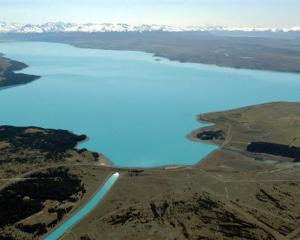
Chinese demand and an easing in competition from some other countries has seen forestry notch up some its best log export prices in years, but as with much of the agricultural sector, the strength of the New Zealand dollar is weighing heavy.
ASB rural economist Nathan Penny last week ran the rule over commodities and the forest sector in recent reports, outlining some moderation in several areas which had recently enjoyed strong demand and prices.
Mr Penny said 2017 had been "a year out of the box" for forestry, with log prices at or near record highs for most of 2017.
"However] forestry’s banner 2017 year is unlikely to repeat over 2018," Mr Penny said in a statement.
Mr Penny outlined a triple whammy of concerns facing the sector next year, from the dollar strength, to Chinese demand and shipping rate rises, which had been a crucial element of costs for exporters in recent years.
While the New Zealand dollar was weak it had been supportive of prices, but he predicted it would rise from around US72c at present to US75c by mid next year and US77c by the end of 2018.
In China, Mr Penny said there was concern about a decline in the growth of house prices, translating into its construction, which meant "consistently firm" demand may "soften".
He said shipping rates were continuing to rise off last year’s lows, with the key Baltic Dry Index prices in September more than 60% higher then September last year.
Mr Penny also highlighted a "positive" in that domestic demand around the country was "likely to remain firm".
"The [New Zealand] construction backlog is long and likely to continue to drive activity and demand for logs and timber for years to come," he said.
"All up we expect forestry prices to ease over 2018.
"However, prices are likely to remain high by historical standards with local construction still underpinning prices," he said.
In the dairy sector, Mr Penny said Fonterra’s financial results had come in at the bottom end of its forecast range for the year, with earnings per share settling at 46c, down 6c from 2015-16. The finalised 2016-17 milk price came in at $6.12 per kg.
"Fonterra shares our [ASB] confidence for 2017-18, keeping its forecast at $6.75 a kilo," Mr Penny said.
"As we’ve stated recently, if the weather and New Zealand production don’t improve, we expect to lift our milk price forecast to $7 a kilo, or above, in the next month or so," he said.
Mr Penny said the seasonal lamb price peak was nearing, at around $7.25/kg to $7.50/kg.
"Beyond the peak, we are expecting a moderate seasonal decline in line with recent seasons," he said.
Beef prices had been "largely stable" over September and the prices outlook remained firm for 2017-18, albeit a touch back from the highs seen during the past season or two, Mr Penny said.












